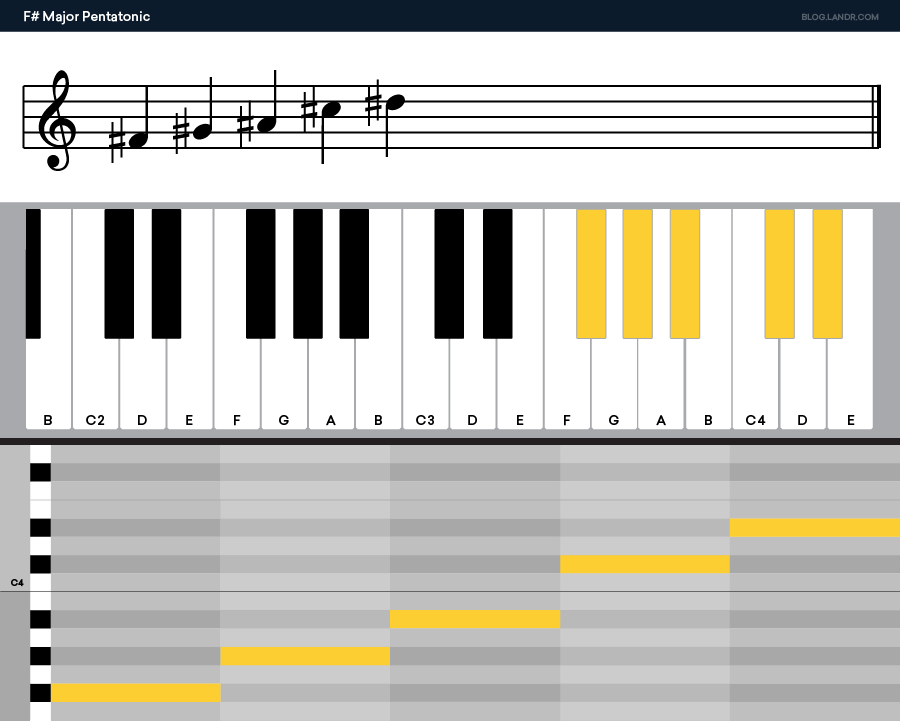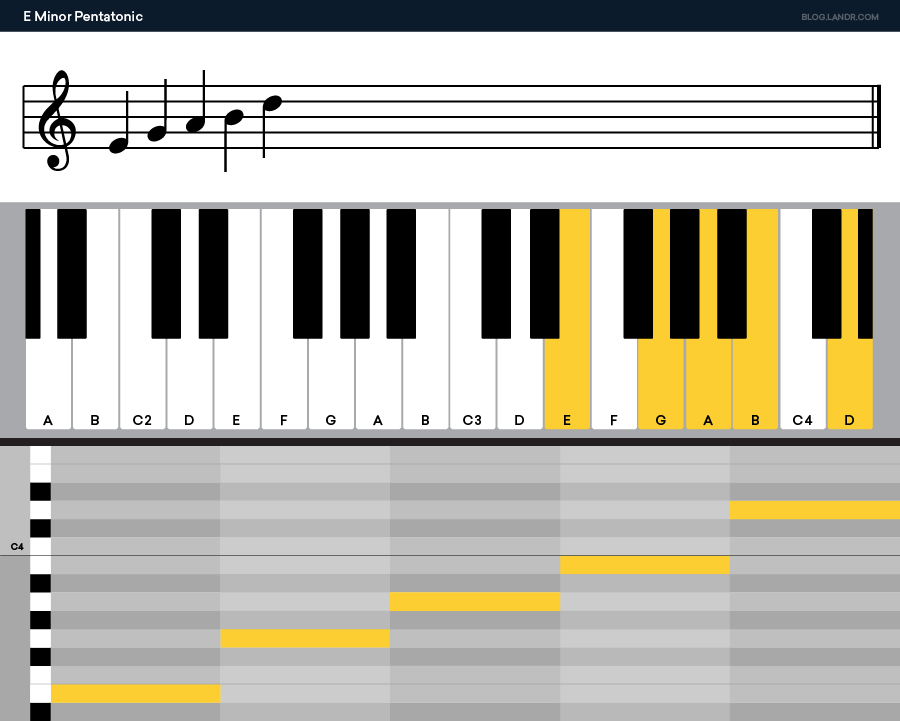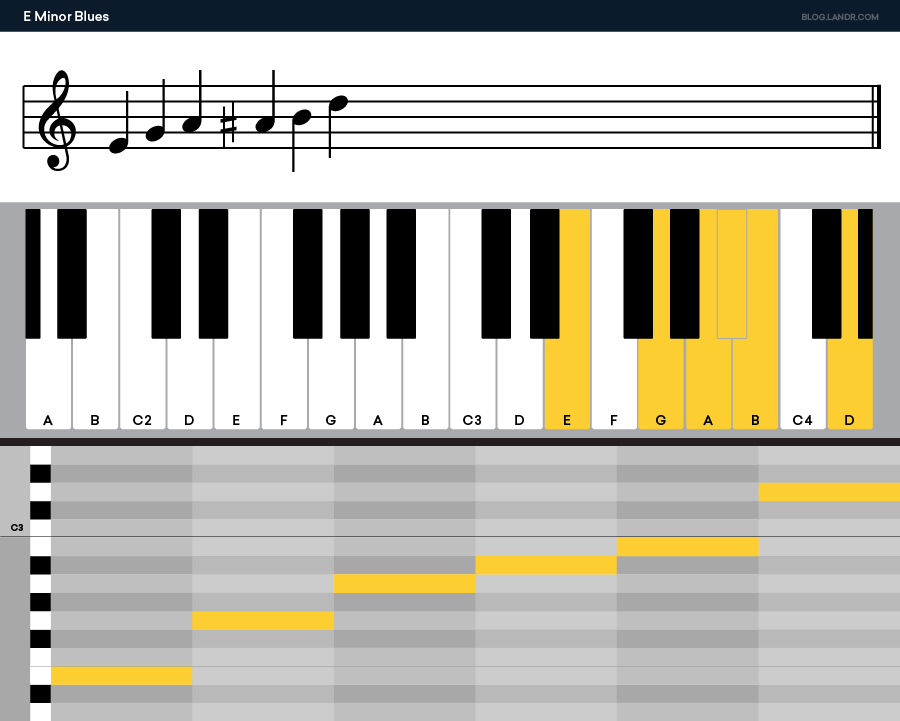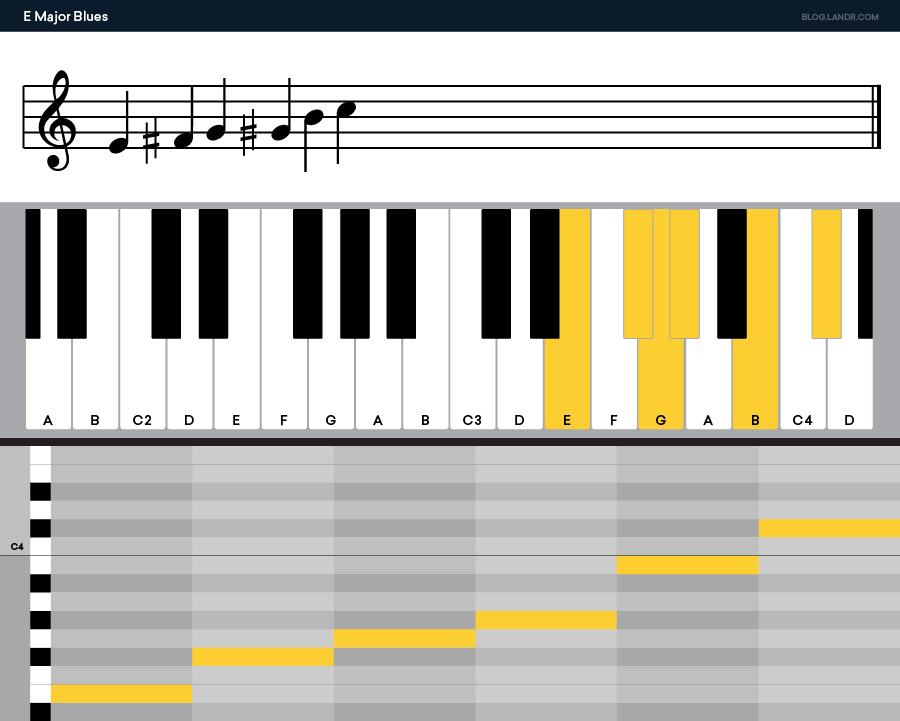How Do You Make a Blues Scale With Notes
Despite what you might have heard, the blues scale isn't your grandfather's musical scale.
Whether you shred on guitar in a metal outfit or compose jazzy electronic pop from your bedroom, the blues scale is a powerful tool you can use to create with.
Making music can be tough when you don't know how or where to begin, but luckily, musical staples like blues scales are here to help.
From catchy pentatonic blues scales to attention-grabbing blues notes, blues scales have the power to make music more memorable and engaging.
In this guide, we're breaking down the world of blues scales. We'll show you what they are and how to use them to liven up your music.
What is the blues scale?
A blues scale is a six note scale based on the major or minor pentatonic with added chromatic "blue" notes. The blue notes are ♯ 4/♭5 in the minor blues scale and ♭3 in the major blues scale. The more common minor blues scale has the semitone pattern 1-2-♭3-4-♭5-♭7, and the major blues scale has the pattern 1-2-♭3-3-5-6.
I'll go through and unpack that to explain exactly how blues scales work—and how to use them in your music.
Major and minor scales have concrete, well-defined characters, but blues scales create entirely new characters by melding both major and minor sounds together into memorable scales.
Like all chords and scales, blues scales are fixed patterns of notes.
Like all chords and scales, blues scales are fixed patterns of notes.
This means that a blues scale on guitar is built with the same notes as the blues scale on bass or piano.
Blues notes and scales gave birth to an entire musical genre in the early 20th century, but blues scales are now used in basically every musical genre and style you can think of.
Pentatonic scales
Different blues scales can be built on both major and minor scales, but all blues scales are constructed with notes taken from simple 5-note pentatonic scales.
If you're unfamiliar with how to play blues scales, starting by memorizing pentatonic scales first is your best bet.
On the keyboard, a major pentatonic scale can easily be played and recognized as the black keys starting with the F# note:

Blue notes
Blues notes are what transforms major and minor pentatonic scales into pentatonic blues scales (or just blues scales for short).
For example, let's take a look at a basic E minor pentatonic scale:

By adding a single blues note we can change the tone and feel of this E minor pentatonic scale into something more compelling and memorable:
By adding a single blues note we can change the tone and feel of this E minor pentatonic scale into something more compelling and memorable.

Now, let's build an E major blues scale starting with the E major pentatonic notes:

How you choose to play blues scales will entirely depend on your instrument and the key you're playing in. Singing or playing the blues scale on an instrument is as simple as incorporating blues notes into what you're performing.
How to use blues scales
Asking how to use blues scales in music is sort of like asking a chef how to cook an egg.
From making vocal melodies more interesting to unlocking new musical characters in any genre, blues scales have tons of great uses.
Asking how to use blues scales in music is sort of like asking a chef how to cook an egg.
Improvising
Blues scales are perfect jumping-off points for musical improvisation.
Despite only being six notes long, major and minor blues scales pack loads of character and endless musical possibilities.
By playing blues scales over repeating 12-bar blues chord progressions, you'll have access to more musical directions and ideas than you can shake a stick at.
Writing melodies
A simple blues note has the power to transform an otherwise bland melody into something compelling and unforgettable.
Musicians can create vocal and instrumental melodies by experimenting with blues scales.
Using the 12-bar blues chord progression is a great way to improvise with blues scales, but don't stop there.
You can write blues melodies over any combination of chords, but to make something that works will take experimentation.
Exercises to build muscle memory and theory knowledge
Blues scales are great tools for building technical skills and music theory chops.
Memorizing major and minor blues scales vocally or on our instruments helps you use them later on in songwriting or during improvisation. For singers, this is a huge asset when it comes to writing vocal melodies.
Memorizing major and minor blues scales vocally or on our instruments helps you use them later on in songwriting or during improvisation.
Keyboard, bass, and guitar players have an easier time writing new music and performing other artist's songs when they take the time to memorize blues scales in different keys.
Learn the blues scale
Musicians thrive when they give themselves the resources they need to succeed.
Time, space for working in, and tools like blues scales can give you access to powerful new directions in music you might not have been able to find otherwise.
Basics like scales and chords might seem like boring music theory knowledge, but they're actually massive benefits when it comes to creating music.
No matter what your goals are in music, memorizing and using blues scales will be a big help.
Source: https://blog.landr.com/blues-scale/
0 Response to "How Do You Make a Blues Scale With Notes"
Post a Comment